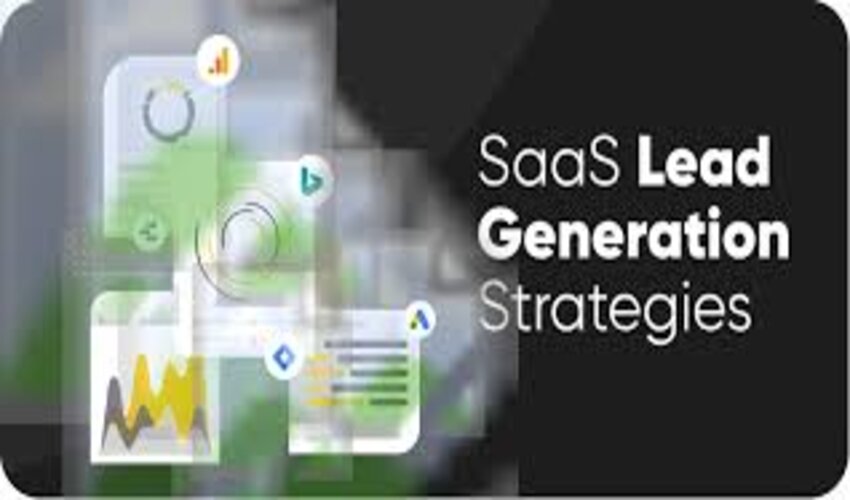
Last updated on May 17th, 2024 at 06:03 am
Saas lead generation holds great importance in modern business and communication. It serves as a vital tool to connect with potential customers and partners and expand your network. Effective outreach can be the determining factor in shaping the future of your business or professional endeavors.
In today’s digital age, where information travels at lightning speed and communication channels are diverse, mastering the art of outreach for lead generation has become more crucial than ever before. However, achieving success in Saas lead generation is not merely about sending numerous emails or making cold calls; it requires a thoughtful and strategic approach.
This article aims to delve into the process of outreach for Saas lead generation and provide you with five proven strategies for achieving remarkable results.
1. Content Marketing Excellence
Creating valuable and relevant content is a fundamental pillar for achieving success in SaaS lead generation. To embark on this journey, one must initially understand their target audience’s pain points, challenges, and needs.
Strategically distributing your content holds equal importance. You can share it on your website and through social media platforms, and you can consider guest posting on industry-related websites to broaden your audience. Moreover, implementing SEO best practices will enhance the discoverability of your content on search engines.
To make this endeavor easier, you can also consider engaging the help of reputable outreach companies like My Outreach. They have gained recognition for their expertise in assisting businesses to create valuable content that resonates with their target audience. Their specialization lies in conducting comprehensive market research and analysis, enabling you to gain invaluable insights into your industry landscape.
2. Email Marketing Automation
Email marketing remains a powerful tool for generating leads in the realm of SaaS. However, it goes beyond simply sending generic emails to a large number of recipients. The crucial elements are personalization and automation. To begin with, segment your email list based on various factors like user behavior, demographics, and purchase history. This enables you to customize your messages according to the unique interests and requirements of each segment.
Automation tools empower users to effortlessly send targeted emails at optimal moments throughout the customer’s journey. For example, these tools allow them to send onboarding emails to newly signed-up individuals; nurture leads by delivering content based on their interests, and re-engage inactive users through compelling email campaigns.
Furthermore, creating captivating subject lines and engaging content boosts email open rates and encourages recipients to take action by clicking through.
3. Social Media Advertising
Social media platforms offer a wide range of potential leads, making paid advertising an effective strategy. To maximize results, it is crucial to identify the platforms frequently by your target audience and create targeted ad campaigns accordingly.
Platforms such as Facebook, LinkedIn, and Twitter provide precise targeting options based on demographics, interests, and behavior.
When crafting social media advertisements, it is imperative to highlight the value and benefits of your SaaS product. To swiftly capture users’ attention, utilize captivating visuals and concise ad copy. Additionally, consider implementing retargeting campaigns to re-engage individuals who have previously interacted with your website or ads but have not yet converted.
Monitoring and optimizing social media campaigns is essential for achieving success. To ensure a positive return on investment, it’s crucial to analyze metrics like click-through rates, conversion rates, and ad specificnd. Make necessary adjustments to creative content, targeting parameters, and budgets in order to maximize lead generation efficiency.
4. Partnering and Collaboration
Collaborating with other SaaS companies or industry influencers can significantly impact lead generation in the SaaS industry. Consider partnering with organizations that complement your product and reaching out to key figures within the industry.
By engaging in co-marketing activities, such as joint webinars, collaborating on content creation, or hosting events together, you have the opportunity to introduce your SaaS solution to a broader and larger target audience. This strategic approach can significantly boost visibility and attract potential customers.
A collaborative approach to expanding your reach and aligning partners’ interests with your own is to leverage affiliate marketing. Consider creating an affiliate program that offers incentives for partners to promote your SaaS solution. By doing so, affiliates can earn commissions for every lead or customer they refer.
This effective strategy not only widens your audience but also fosters a mutually beneficial relationship with your partners.
5. Customer Referral Programs
Your current customers have the potential to bring in valuable leads. Consider implementing a customer referral program that rewards users for recommending your SaaS product to friends, colleagues, or other businesses. These incentives can range from discounts and complimentary service months to appealing rewards.
To enhance the effectiveness of your referral program, simplifying the process for customers is crucial when they refer others. This can be accomplished by providing them with shareable links, pre-written messages, and user-friendly referral interfaces. Additionally, ensuring customer engagement and motivation requires prompt tracking and rewarding of referrals.
To leverage the power of word-of-mouth marketing, businesses should encourage satisfied customers to share their positive experiences on review platforms and social media. Your SaaS product gains enhanced credibility by receiving positive reviews and testimonials, ultimately attracting new leads.
Conclusion
The digital landscape is constantly changing, requiring continuous adaptation in your lead generation strategies. What works today may not be effective tomorrow, emphasizing the importance of staying informed about industry trends, emerging technologies, and shifts in consumer behavior. It is vital to remember that lead generation is an ongoing process that requires dedication, perseverance, and a commitment to constant improvement.

Aimee Garcia is a Marketing Consultant and Technical Writer at DailyTechTime. She has 5+ years of experience in Digital Marketing. She has worked with different IT companies.

